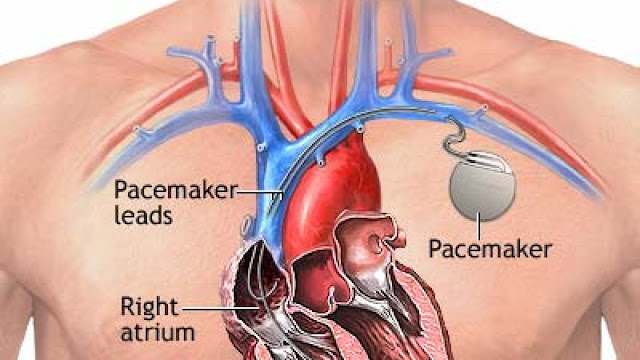Without change there is no innovation, creativity, or incentive for improvement. Those who initiate change will have a better opportunity to manage the change that is inevitable.(William Pollard)
In an era of constant innovation and discovery, we may not realize that most inventions take years to develop. But sometimes, all it takes is an accident. Here are 10 inventions we'd never be able to enjoy if not for an apparent mistake.
01.Penicillin
Forever enshrined in scientific legend, the discovery of penicillin a group of antibiotics used to combat a variety of bacterial infections is really just a case of dirty dishes. Scottish biologist Alexander Fleming took an August vacation from his day-to-day work in the lab investigating staphylococci, known commonly as staph. Upon his return on Sept. 3, 1928, the perceptive scientist found a strange fungus on a culture he had left in his lab a fungus that had killed off all surrounding bacteria in the culture. Modern medicine was never the same.
02.The Microwave
Sometimes all you really need to make the next leap in science is a snack. Percy Spencer was an American engineer who, while working for Raytheon, walked in front of a magnetron, a vacuum tube used to generate microwaves, and noticed that the chocolate bar in his pocket melted. In 1945 after a few more experiments (one involving an exploding egg), Spencer successfully invented the first microwave oven. The first models were a lot like the early computers: bulky and unrealistic. In 1967, compact microwaves would begin filling American homes. Snacking, then, is good for science.
03.Vulcanized Rubber
In the 1830s, natural rubber was a popular substance for waterproof shoes and boots, but its inability to withstand freezing temperatures and extreme heat soon left consumers and manufacturers frustrated. That led some to say rubber had no future, but Charles Goodyear disagreed. After years of trial and error trying to make rubber more durable, the scientist stumbled upon his greatest discovery by complete accident. In 1839, when showcasing his latest experiment, Goodyear accidentally dropped his rubber concoction on a hot stove. What he discovered was a charred leather-like substance with an elastic rim. Rubber was now weatherproof. Goodyear would never reap the benefits of his discovery and died $200,000 in debt. His surname and legacy live on, however, in the Goodyear Tire and Rubber Company, which was named after him nearly 40 years after his death.
04.Coca Cola
The inventor of the Coca-Cola wasn't a shrewd businessman, a seller of sweets, or a dreamer looking to strike it rich in the beverage business. John Pemberton just wanted to cure headaches. A pharmacist by profession, Pemberton used two main ingredients in his hopeful headache cure: coca leaves and cola nuts. When his lab assistant accidentally mixed the two with carbonated water, the world's first Coke was the result. Over the years, Coke would tinker with the now-secret recipe. But sadly, Pemberton died two years later and never saw his simple mixture give birth to a soft drink empire.
05.Corn Flakes
It all started with Will Keith Kellogg, his interest in medicine and a bout of forgetfulness. Kellogg assisted his brother, who worked as a doctor at the Battle Creek Sanitarium in Michigan, with patients and their diets. While conducting research with his brother and helping cook meals for patients, Kellogg stumbled upon a discovery that would change his life. Responsible for making bread dough one day, Kellogg accidentally left his main ingredient -- boiled wheat -- sitting out for several hours. When he came back to roll the ingredient into the dough, the wheat became flaky. Curious to see what would happen, Kellogg baked the flaky dough anyway, creating a crunchy and flaky snack. The flakes were a hit with patients, so Kellogg embarked on a mission to enhance the product for large-scale sale. Will Kellogg tinkered with his recipe and finally settled on using corn as a main ingredient for the flakes. He launched his business, 'The Battle Creek Toasted Corn Flakes Company,' in 1906, which eventually came to be known as the Kellogg's company that sells Corn Flakes, other cereals and convenience foods today. Accidents can lead to discoveries as well as roadblocks. On the next page, see which inventor overcame a series of strange events to discover dynamite.
06.Dynamite
Alfred Nobel, a Swedish chemist, and engineer learned this the hard way. In efforts to stabilize nitroglycerin, an explosive liquid, Nobel and laboratory workers experienced several accidents -- one of which ultimately proved fatal. An explosion in Stockholm, Sweden, left Nobel's younger brother and a few others dead in 1864.No one knew how exactly this accident affected Nobel, but most suspect it further pushed him to find a solution to safely store explosive materials. With this new knowledge of the instability of nitroglycerin, Nobel continually tested methods to detonate and store explosives. Some say that Nobel discovered the key to stabilizing the substance through another accident. While transporting nitroglycerin, Nobel noticed that one of the cans accidentally broke open and leaked. He discovered that the material in which the cans were packed -- a sedimentary rock mixture called kieselguhr -- absorbed the liquid perfectly [source: Brunswig]. Since nitroglycerin is most dangerous to handle in its liquid form, the incident led Nobel to explore kieselguhr as a stabilizer for explosives. Ingeniously, Nobel developed a formula that allowed the explosive to be mixed with kieselguhr without hindering its power. He patented his product in 1867, naming it dynamite, which revolutionized construction practices and the creation of explosives.
07.Radioactivity
Bad weather can be the spark of serendipity, too. In 1896, French scientist Henri Becquerel was working on an experiment involving a uranium-enriched crystal. He believed that sunlight was the reason that the crystal would burn its image on a photographic plate. With dark clouds rolling in, Becquerel packed up his gear and decided to continue his research on another sunny day.
A few days later, he retrieved the crystal from a darkened drawer, but the image burned on the plate (above) was, as he described, "fogged." The crystal emitted rays that fogged a plate, but were dismissed as weaker rays compared to William Roentgen's X-ray. Becquerel wouldn't go on to put a name to the phenomenon. He left that for two fellow scientists: Pierre and Marie Curie.
08.Velcro
A dog invented Velcro.
Alright, that's something of an exaggeration, but a dog did play an instrumental role. Swiss engineer George de Mestral was out for a hunting trip with his pooch, and noticed the annoying tendency of burrs to stick to its fur (and his socks). Later, looking under a microscope, Mestral observed the tiny "hooks" that stuck burrs to fabrics and furs. Mestral experimented for years with a variety of textiles before arriving at the newly invented nylon — though it wasn't until two decades later that NASA's fondness for Velcro popularized the tech.
09.Peacemaker
An assistant professor at the University of Buffalo thought he had ruined his project. Instead of picking a 10,000-ohm resistor out of a box to use on a heart-recording prototype, Wilson Great batch took the 1-megaohm variety. The resulting circuit produced a signal that sounded for 1.8 milliseconds, and then paused for a second — a dead ringer for the human heart. Great batch realized the precise current could regulate a pulse, overriding the imperfect heartbeat of the ill. Before this point, pacemakers were television-sized, cumbersome things that were temporarily attached to patients from the outside. But now the effect could be achieved with a small circuit, perfect to tuck into someone's chest.
10.Viagra
Angina Pectoris is a fancy name for chest pain—specifically, spasms in the heart's coronary arteries. The pharmaceutical company Pfizer developed a pill named UK92480 to help constrict these arteries to relieve pain. The pill failed its primary purpose, but the secondary side effect was startling. The drug became known as Viagra, and you know what it does. Pfizer sold $288 million worth of the little blue pill in the first quarter of 2013.
“Progress is made by lazy men looking for easier ways to do things.”
Robert A. Heinlein
Which Invention You think Are best of Mankind Tell Me In Comment Section Below.











EmoticonEmoticon